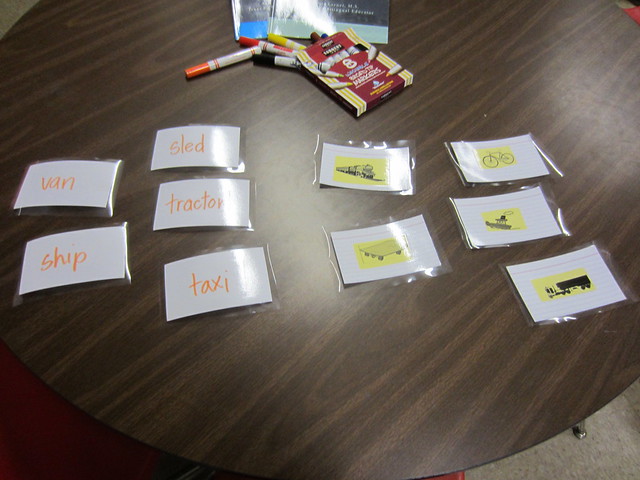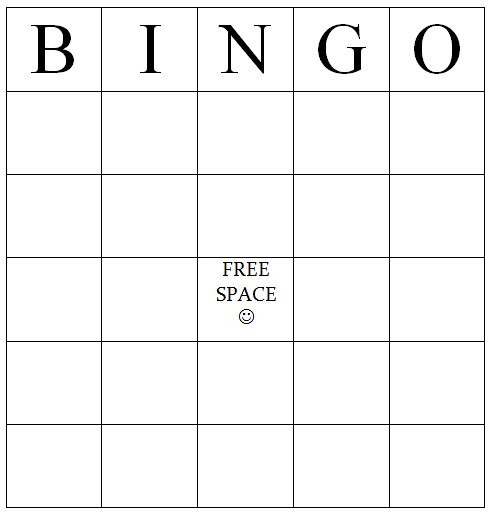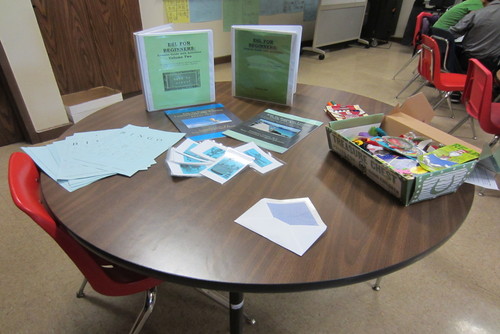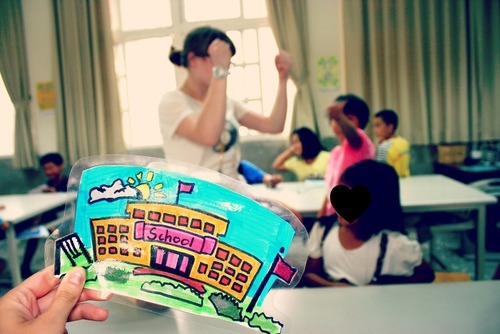When Stephanie Lerner started teaching abroad through her work with Peace Corps in 2002, she immediately noticed that her students’ language mastery sped up dramatically if sge carved out about 10-20 minutes of every lesson for a game to review or introduce a concept.
Here Stephanie shares her experience and her recommendations for how to best use games to reinforce ESL topics...
Top Tips
Use the games daily to spiral the teaching/learning. This means integrating daily reviews or previews of formerly taught concepts into your lessons. Under each game, I have written the review/preview topic that it covers so you can plan your games to spiral appropriately.
In order to facilitate ESL games in the classroom, I have small children sit on the floor in a circle around me. Alternately, older children and adults sit around me in chairs.
Give lots of opportunities to earn prizes during games. It is very motivating at any age, so I give prizes to the big kids and adults too. In all my years working with kids and adults alike, I’ve never had anyone turn down a prize. Prizes can be anything, as small or large as you want them to be. While teaching ESL/EFL to adult college students in Mozambique, I gave out bananas as prizes and they were surprisingly coveted!
Below are my favorite language games from the teaching guide, ESL for Beginners, which can be found on my website. Hope your students enjoy them as much as mine do!
Pick the Right Verb!
PREVIEW/REVIEW TOPIC: PRESENT TENSE VERBS
After teaching or reviewing the present tense structure, put twenty present tense sentences on chart paper with an s and non-s choice of the verb to pick for each sentence. In Round Robin fashion, let each student read a sentence aloud and pick which verb they think correctly fits the sentence. Give one point to each student who correctly chooses a verb. Once all sentences are done, the student with the most points wins the game and earns a prize.
Examples of Sentences
1. Josh arrive/arrives at school on time.
2. They eat/eats dinner at 8:00.
3. I play/plays after school.
4. We play/plays after school.
5. She get/gets up at 6:00.
Simon Says
PREVIEW/REVIEW TOPIC: COMMANDS, SCHOOL VOCABULARY
In this game, the leader (can be teacher or student) gives different commands to the class. Before the game, the teacher can write/review several basic commands relating to the week’s lessons and point to them as she/he speaks to help students with comprehension during the game. Also, repeat each command at least twice.
At the start of the game, everyone should be standing. If the leader says “Simon says…” then the class can follow that command. But, if the leader only says the command (without saying “Simon says…” first), then the students should not follow the command-anyone who does, is out of the game and must sit down.
Spelling Bee
PREVIEW/REVIEW TOPIC: LETTERS OF ALPHABET, ALL VOCABULARY
For this game, chose a student to stand at the front of the class. You will need all the vocabulary words for use in this game written out on index cards. The teacher chooses a vocabulary word card and reads the vocabulary word to the student.
If the student can spell the word out loud by correctly pronouncing each letter of the word for the class without looking at the card, they earn two points and can have another card to try to spell. If the student needs to see the card, and then correctly pronounces each letter as they spell it out loud to the class, the student earns one point, but does not get a second turn (you may want to modify this rule if you work with very young students).
Let all students who volunteer have a turn. The student with the most points at the end of the game wins a prize.
Numbers Bingo
PREVIEW/REVIEW TOPIC: NUMBERS 1-20
Hand out blank bingo cards (Appendix J) and have students fill in the numbers 1-20 (they will have to repeat a few) in any mixed-up order on their card. Students can use beans or pebbles to place on the bingo card.
First, read out each letter/number (bingo letter and number in bingo column).
Second, repeat the letter/number.
Third, give students about ten seconds to find letter/number on their bingo board.
Finally, write the letter/number that was called out on the board or chart paper, so students can check their English and also check that they have placed a bean on the correct spot. The first student to get five beans placed in a row/column, calls out “BINGO,” and wins a prize.
Letters Bingo
PREVIEW/REVIEW TOPIC: LETTERS of the ALPHABET
Hand out blank bingo cards (Appendix J) and have students fill in 24 alphabet letters in any mixed-up order on their card. Students can use beans or pebbles to place on the bingo card. First, read out each letter pair (bingo letter and letter in bingo column).
Second, repeat the letter pair. Third, give students about ten seconds to find letter pair on their bingo board.
Finally, write the letter pair that was called out on the board or chart paper, so students can check their English and also check that they have placed a bean on the correct spot. The first student to get five beans placed in a row/column, calls out “BINGO,” and wins a prize.
After someone wins, have students clear their boards of beans and start again. Collect the bingo boards after the game to be handed out again for the next game.
This and That
REVIEW TOPIC- DEMONSTRATIVES, SCHOOL VOCABULARY
All students stand and the leader names school objects in the classroom, preceded by the word this for objects close to the group or that for objects far from the group. The student must point down (this) or point out (that) depending on whether the teacher says this or that to name the objects. Students who point incorrectly must sit down. The student left standing is the winner.
This/That/These/Those
REVIEW TOPIC: DEMONSTRATIVES, SCHOOL VOCABULARY, PLURALS
Follow the same procedures as in the “This and That” game (above), but also use the words these and those to name groups of objects. The student left standing is the winner.
Name It!

REVIEW TOPIC: ALL VOCABULARY
You will need all the vocabulary words for use in this game written out on index cards with a picture on one side (magazine cutouts work fine) and the word on the other. Spread out all the vocabulary cards word down with students sitting in a circle around the cards. Allow each student to choose a card and pronounce its name in English. If the student does this correctly, they can keep the card. The student with the most cards at the end of the game is the winner.
APPENDIX J

Related Pages






